
This comprehensive guide aims to delve into the myriad of flavors, traditions, and dining practices that define the culinary landscape of China, providing an enriching culinary journey for every enthusiast.
Exploring the diverse and vibrant culinary landscape of China is akin to embarking on a grand adventure. China, with its rich history and cultural tapestry, offers an array of food experiences that are both exciting and unique. For foreigners, navigating this vast gastronomic world can be both thrilling and daunting.
The Rich Tapestry of Chinese Cuisine
Chinese cuisine is not monolithic; it is a complex and varied tapestry that reflects the country’s vast geography, history, and cultural diversity.
The main regional cuisines, known as the “Eight Great Traditions” each offer distinct flavors and cooking techniques. These include:
Sichuan Cuisine
Known for its bold and spicy flavors, Sichuan cuisine is famous for its liberal use of garlic, chili peppers, and the unique Sichuan peppercorn, which imparts a characteristic numbing sensation.
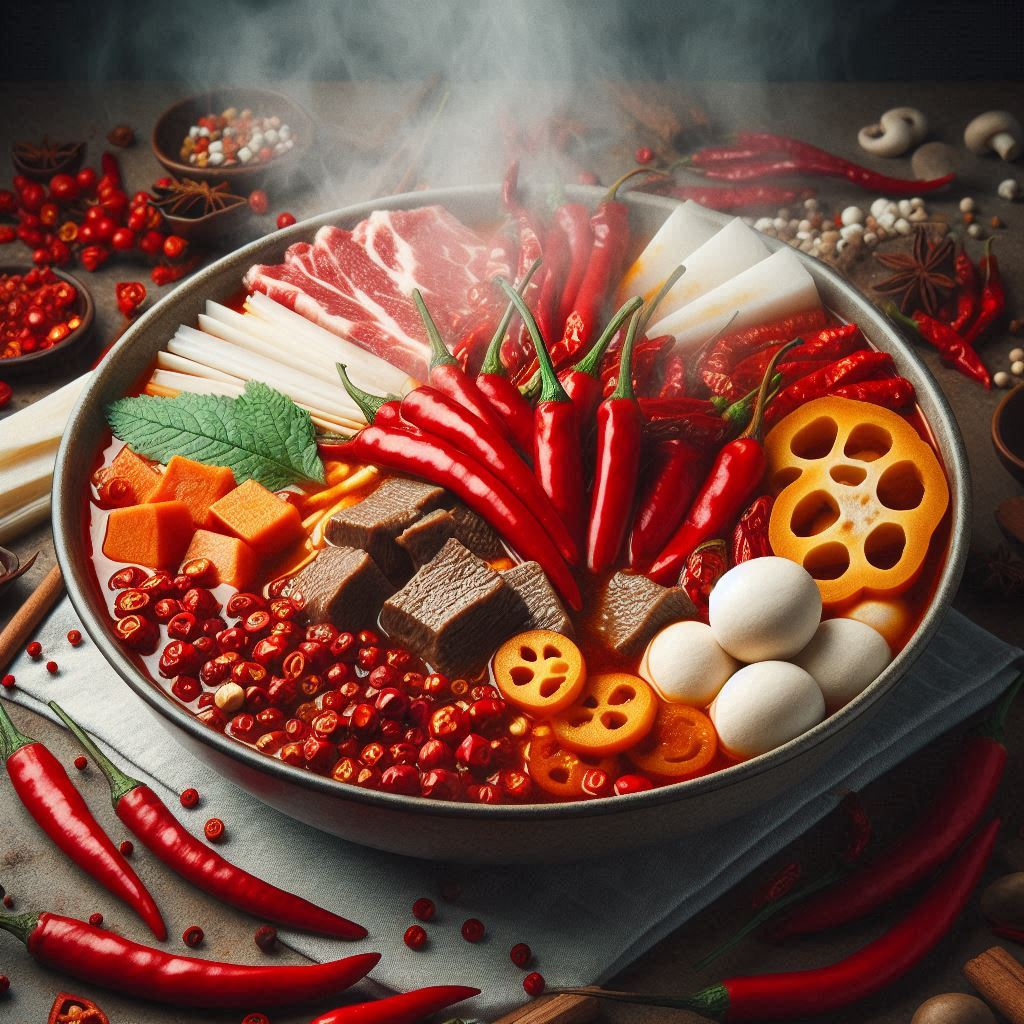
Signature dishes include Kung Pao Chicken, Mapo Tofu, and Hot Pot.
Cantonese Cuisine
Renowned for its subtle and delicate flavors, Cantonese cuisine emphasizes fresh ingredients and light seasoning.
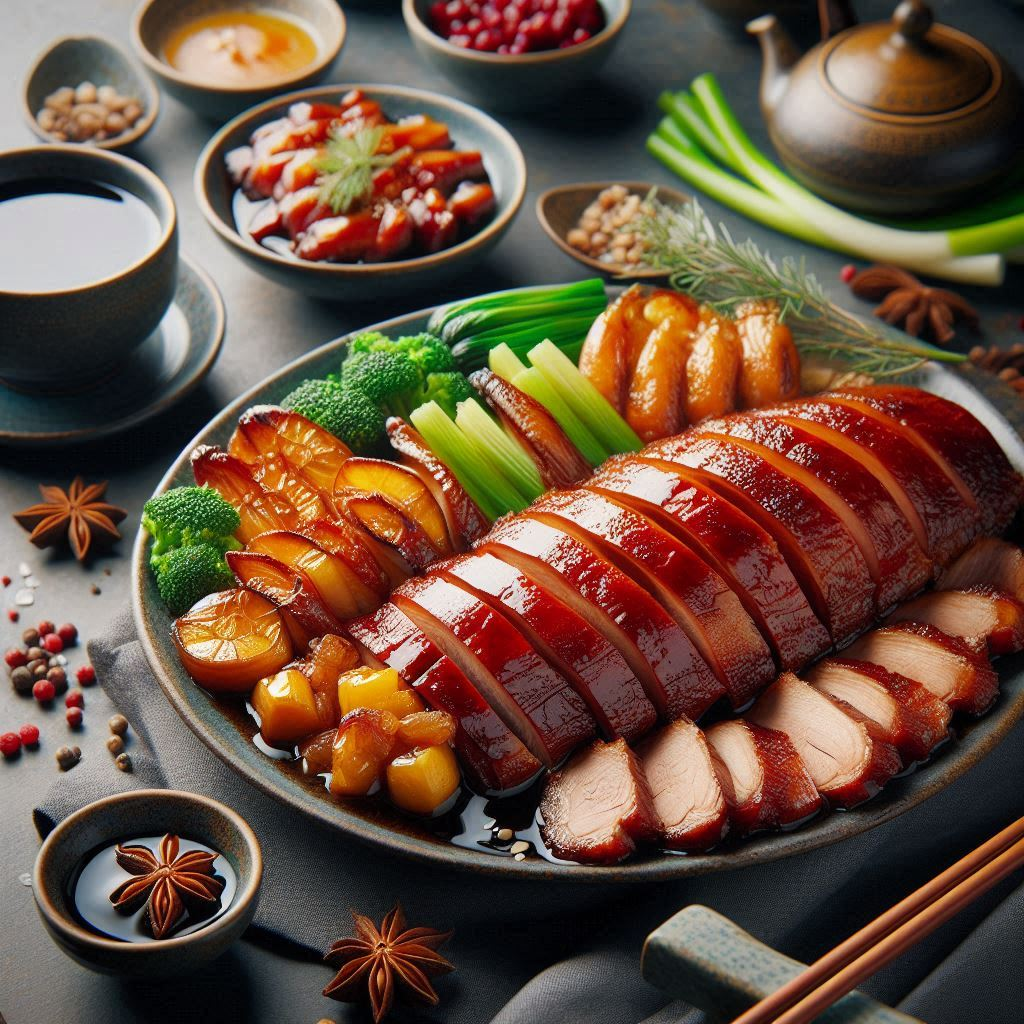
Dim sum, a collection of small dishes typically enjoyed during brunch, is a quintessential Cantonese tradition. Popular dishes include Char Siu (barbecue pork), Har Gow (shrimp dumplings), and Cantonese Roast Duck.
Shandong Cuisine
This cuisine is known for its use of fresh, locally sourced ingredients and a variety of seafood.
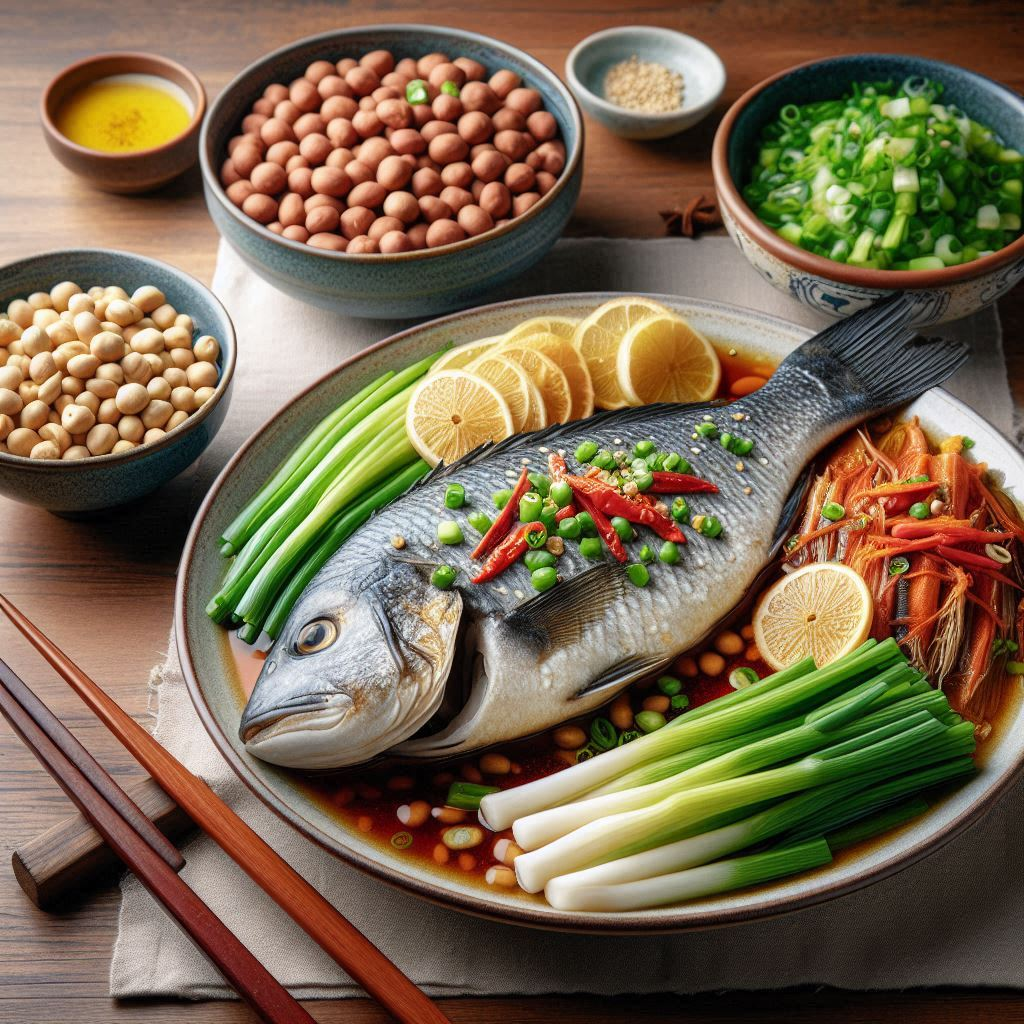
It features clear, light soups and a preference for braising and roasting techniques. Key dishes include Baozi (steamed buns) and Sweet and Sour Carp.
Jiangsu Cuisine
Characterized by its refined and elegant presentation, Jiangsu cuisine often features sweet and slightly salty flavors.
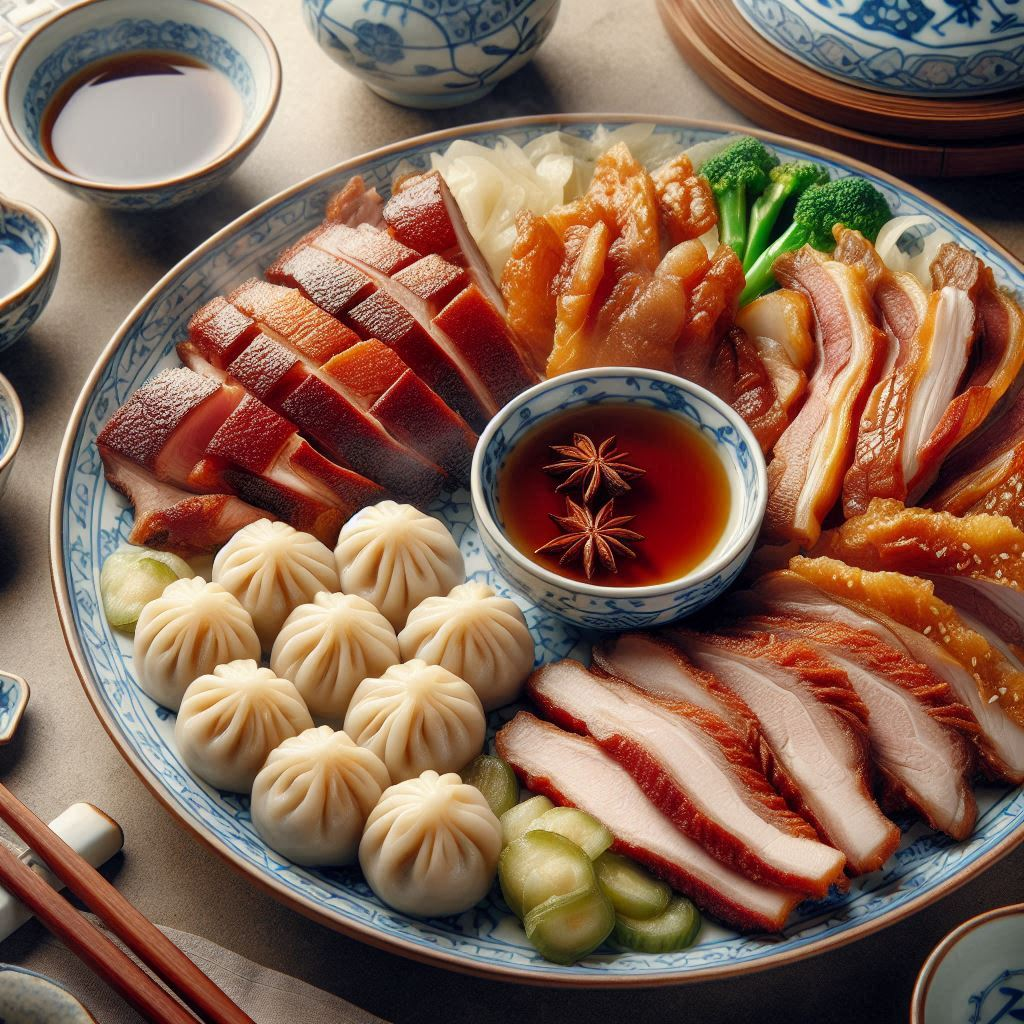
Dishes such as Dongpo Pork and Lion’s Head Meatballs are staples of this region.
Zhejiang Cuisine
Often called the “Land of Fish and Rice,” Zhejiang cuisine is known for its fresh seafood and a balanced blend of sweet and savory flavors.
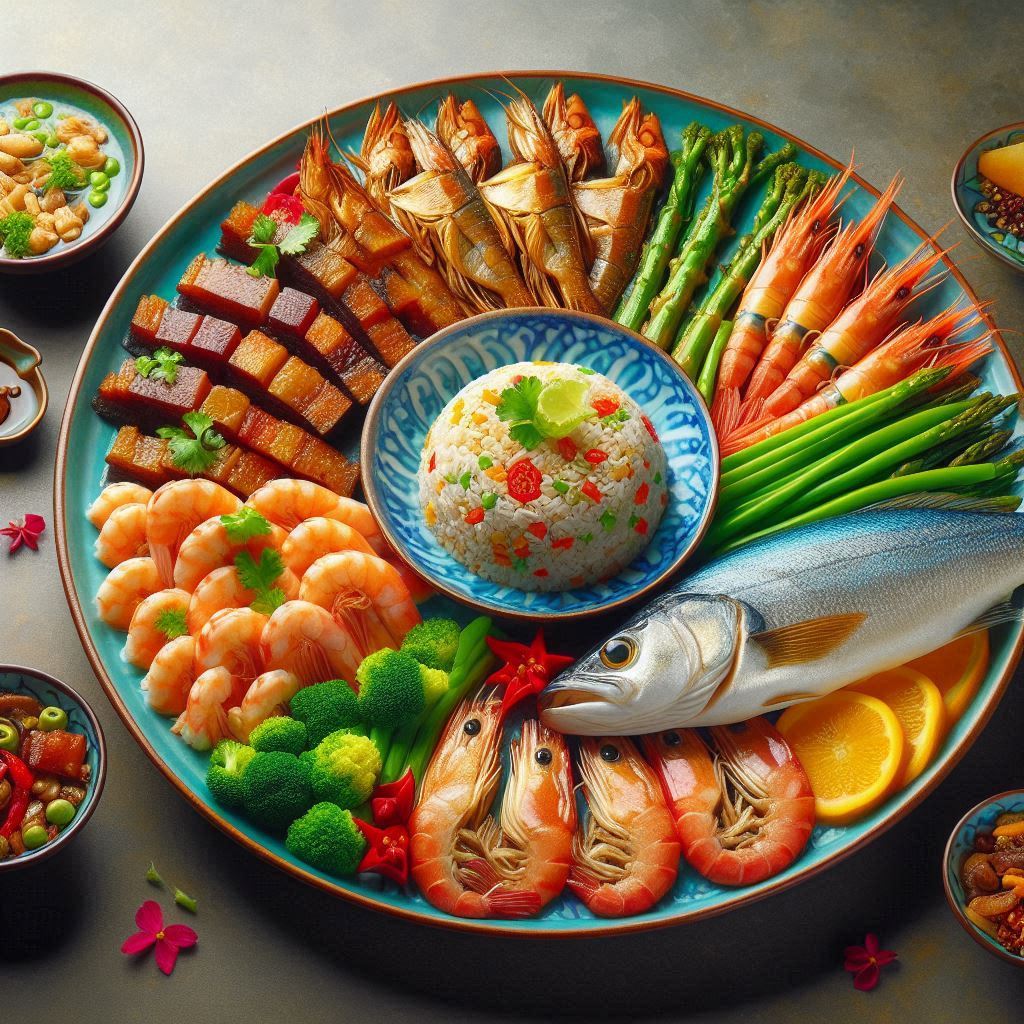
West Lake Fish in Vinegar Gravy and Beggar’s Chicken are notable dishes.
Fujian Cuisine
Fujian cuisine highlights seafood, mountain delicacies, and a variety of soups.
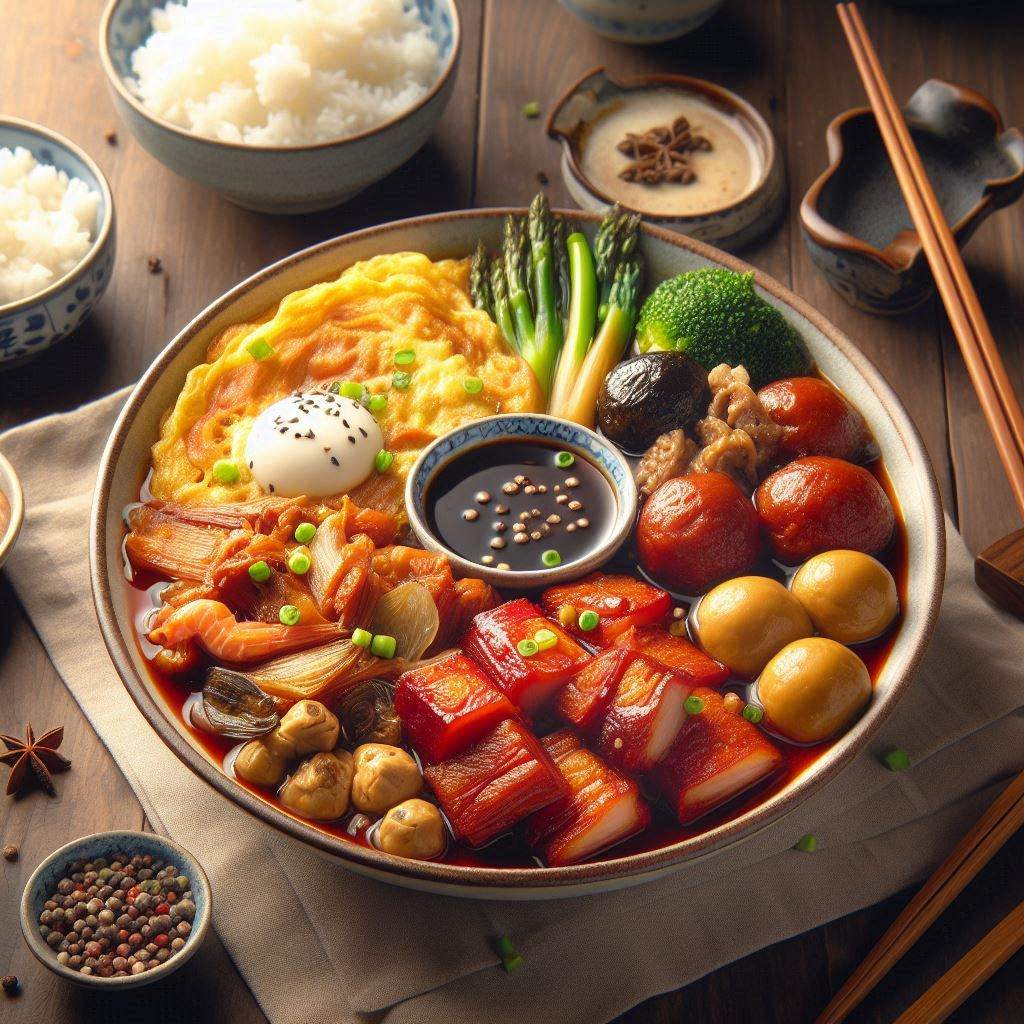
It is known for its umami-rich flavors and precise knife skills. Buddha Jumps Over the Wall and Fuzhou Fish Balls are iconic dishes.
Hunan Cuisine
Similar to Sichuan cuisine but with a greater emphasis on fresh chili peppers, Hunan cuisine is known for its hot and sour flavors.
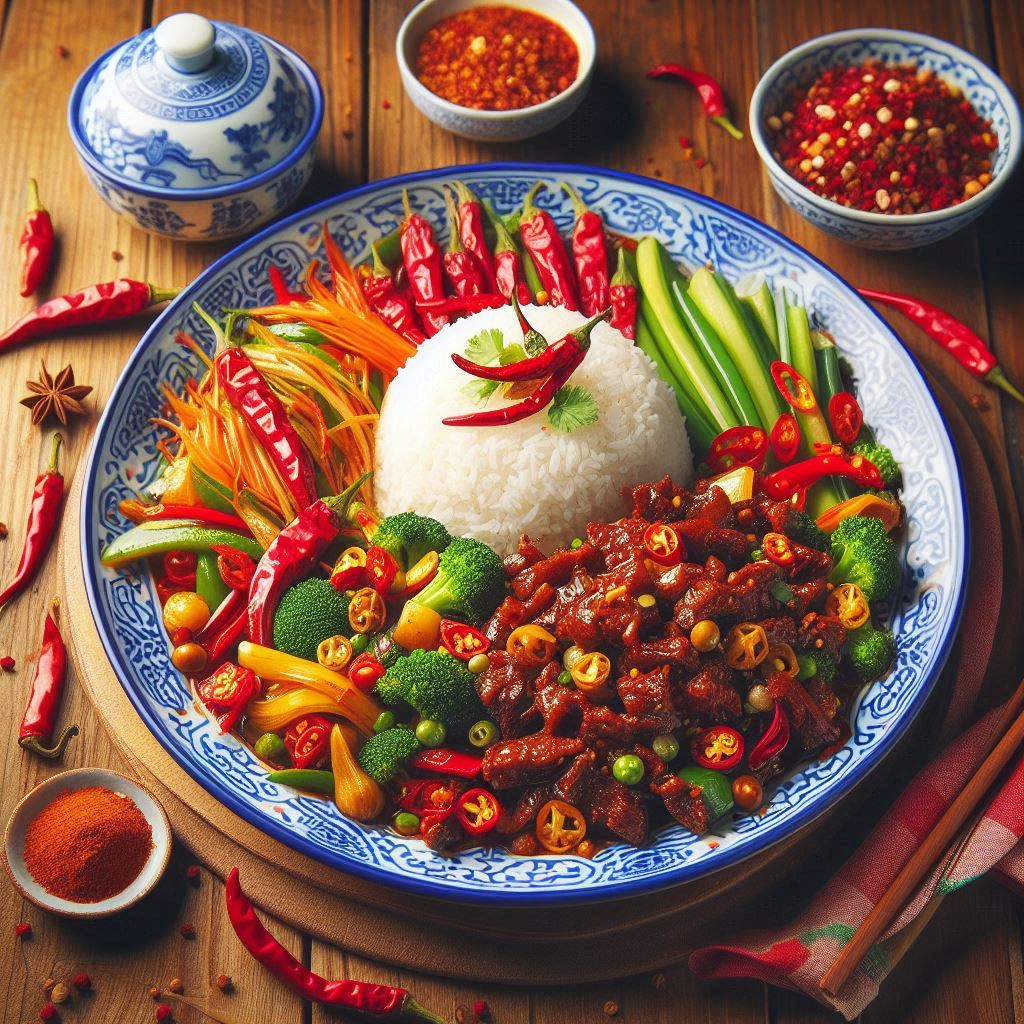
Mao’s Braised Pork and Steamed Fish Head with Diced Hot Red Peppers are famous dishes.
Anhui Cuisine
This lesser-known cuisine emphasizes wild herbs and vegetables, as well as local delicacies from the region’s mountains and rivers.
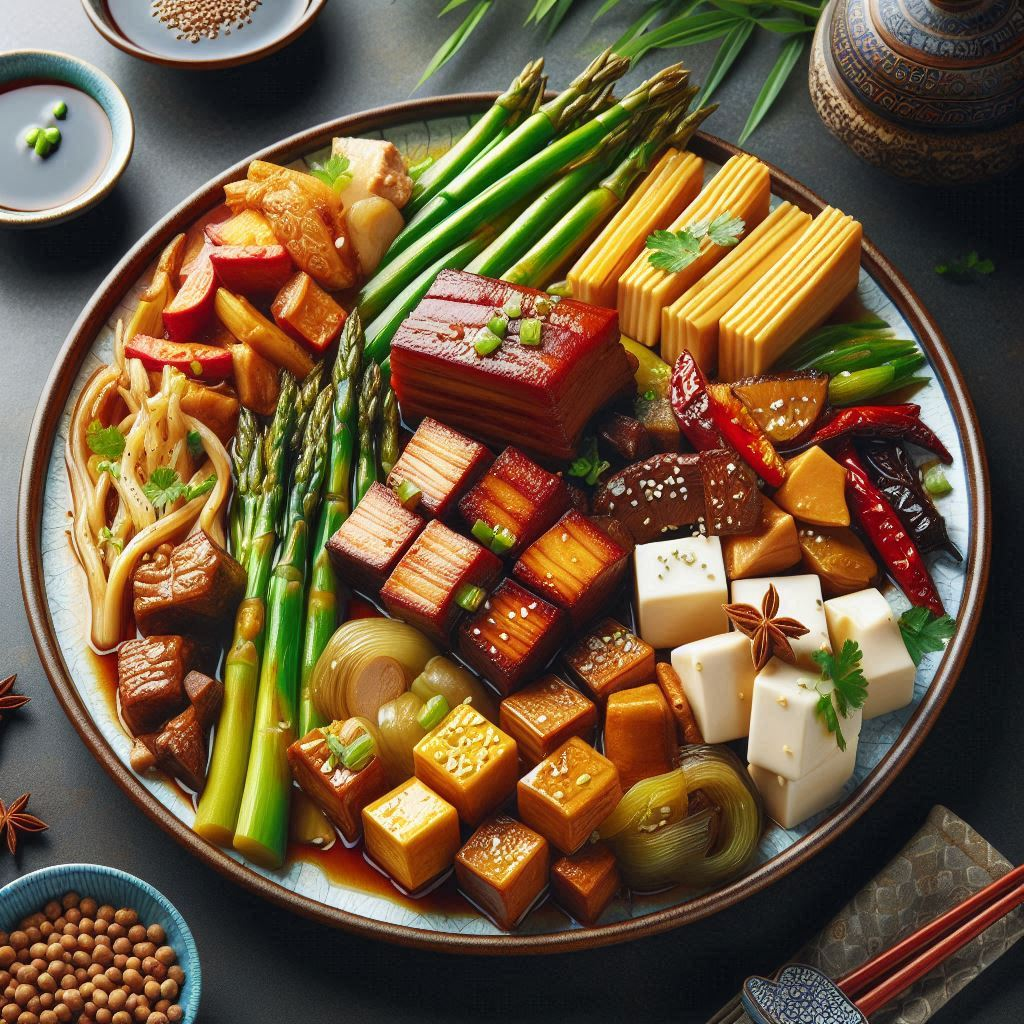
Braised Tofu and Li Hongzhang Hotchpotch are traditional dishes.
Street Food: A Culinary Exploration
No culinary adventure in China would be complete without experiencing its vibrant street food culture.
Street vendors offer a plethora of snacks and meals that are both affordable and delectable.
Jianbing (Chinese Crepes)

A popular breakfast item, Jianbing is a savory crepe filled with egg, scallions, cilantro, and a variety of sauces and crunchy toppings.
Baozi (Steamed Buns)
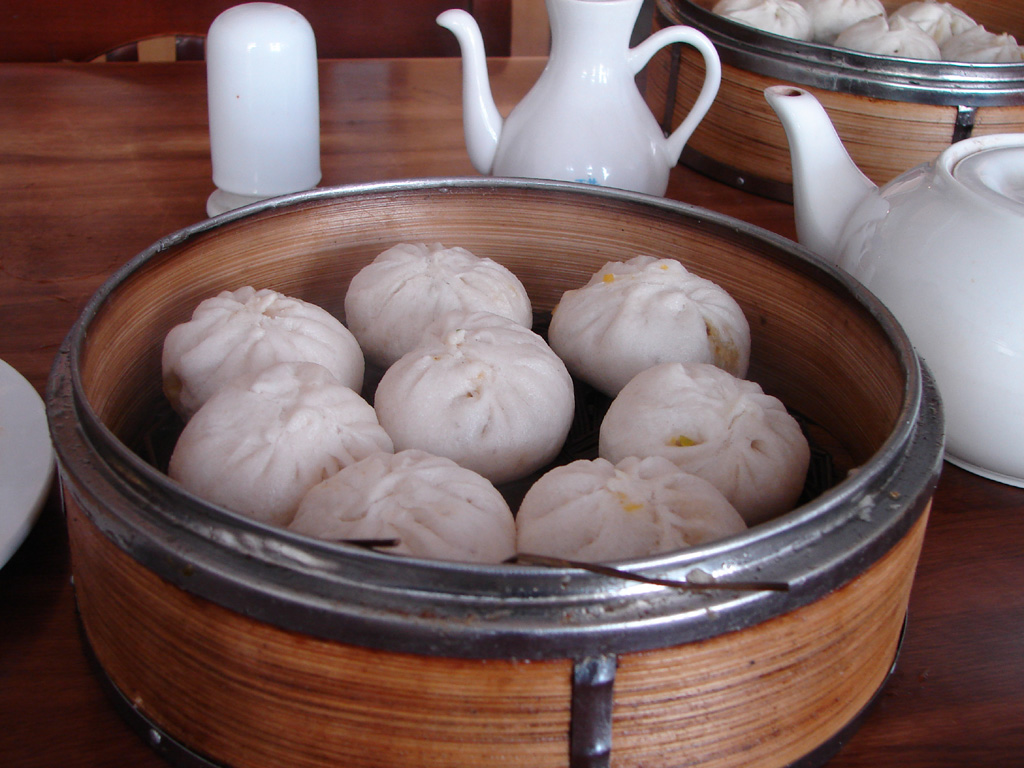
These fluffy steamed buns come with a variety of fillings, such as pork, vegetables, or red bean paste, and are a staple snack across China.
Chuan’r (Grilled Skewers)
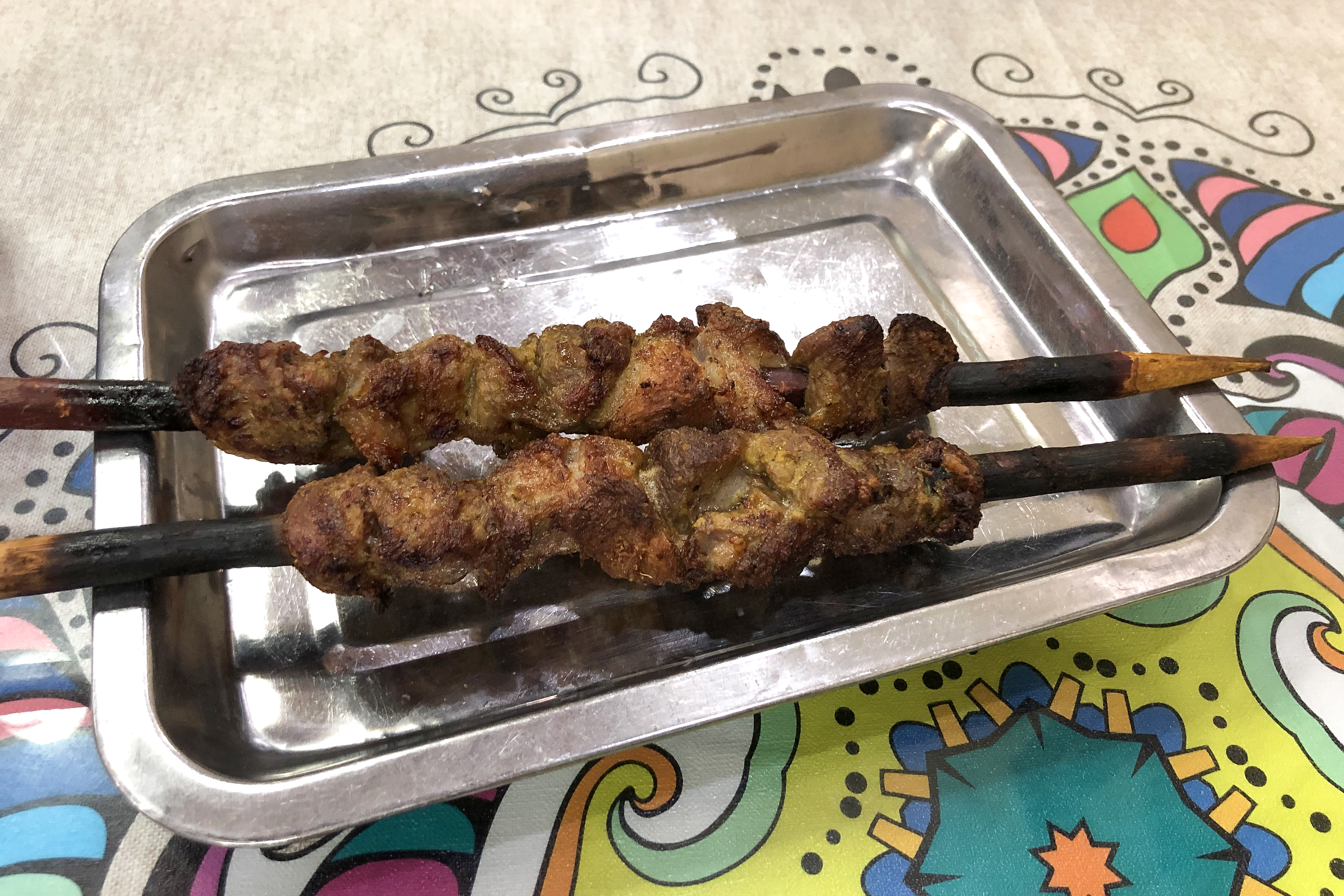
Often enjoyed as a late-night snack, Chuan’r consists of meat, seafood, or vegetables skewered and grilled over an open flame, seasoned with a mix of spices.
Stinky Tofu

This pungent but delicious snack is a type of fermented tofu that is deep-fried and often served with a spicy sauce. It is an acquired taste but beloved by many.
Tanghulu (Candied Hawthorn)
A popular street food during the winter, Tanghulu consists of hawthorn berries skewered and coated in a hard candy shell.
Dining Etiquette and Traditions
Understanding the dining etiquette and traditions in China can greatly enhance your culinary experience. Here are some key aspects to consider:
Family-Style Dining
Meals in China are typically served family-style, with dishes placed in the center of the table for everyone to share. This communal approach emphasizes the importance of sharing and enjoying food together.
Use of Chopsticks
Mastering the use of chopsticks is essential when dining in China. It is considered polite to serve others before serving yourself and to avoid pointing chopsticks directly at others.
Tea Culture
Tea plays a significant role in Chinese dining culture. It is customary to serve tea to guests as a sign of respect and hospitality. Various types of tea, such as green tea, oolong tea, and pu-erh tea, are enjoyed depending on the region and occasion.
Toasting and Drinking
When toasting, it is polite to clink glasses with others, ensuring that your glass is slightly lower than that of the senior person or host. Ganbei (乾杯) is a common phrase used during toasts, meaning “cheers” or “bottoms up.”
Navigating Dietary Restrictions
For foreigners with dietary restrictions, navigating Chinese cuisine can be challenging but not impossible.
Many restaurants in larger cities are accustomed to catering to dietary needs and can accommodate vegetarian, vegan, gluten-free, and other special diets.
Vegetarian and Vegan Options
Vegetarian and vegan dishes are readily available, especially in Buddhist temples and vegetarian restaurants.
Dishes like Buddha’s Delight and various tofu preparations offer delicious meat-free alternatives.
Gluten-Free Dining
Gluten can be a hidden ingredient in many sauces and dishes.
It is advisable to communicate your dietary restrictions clearly and look for dishes made with rice, corn, or other gluten-free grains.
Festive Foods and Celebrations
Chinese festivals are closely tied to food, with each celebration featuring special dishes that hold cultural significance.
Chinese New Year
The most important festival in China, Chinese New Year, features a feast with dishes like Dumplings (Jiaozi), Nian Gao (Rice Cake), and Fish symbolizing prosperity.
Mid-Autumn Festival
Celebrated with Mooncakes, this festival marks the harvest season and is a time for family reunions.
Dragon Boat Festival
Known for Zongzi (Sticky Rice Dumplings), this festival commemorates the ancient poet Qu Yuan.
Conclusion
Embarking on a culinary adventure in China is a journey through a rich cultural heritage, diverse flavors, and unique dining traditions.
From the bold and spicy Sichuan cuisine to the delicate and refined Cantonese dishes, China’s food scene offers something for every palate.
Understanding the regional specialties, street food delights, dining etiquette, and festive foods can enhance your experience and appreciation of this vast gastronomic landscape.


